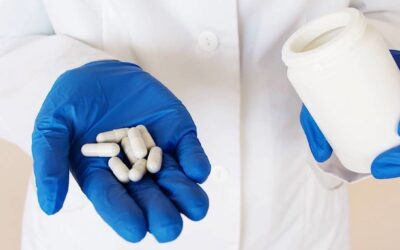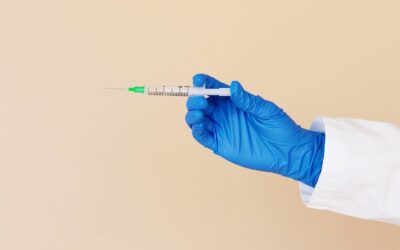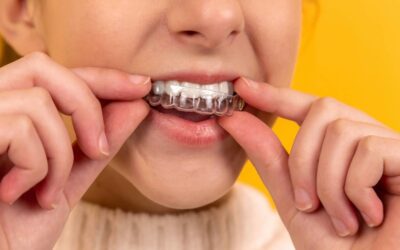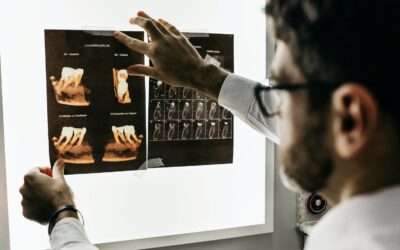1. Jaw Bone Scan with Radionucleotide Bone scans are utilized to assess bone tissue growth. It is an older technology and less specific technology (2D) than SPECT (3D), but it still has a role in diagnosis of bone scan. After the injection of the nucleotide, a gamma...
TMJ Disorders
How to Diagnose and Treat Oral Motor Disorders
1. Trismus Trismus occurs when there is an involuntary restriction of active opening (<38mm) due to abnormal or inappropriate closer muscle activity during opening movement. This is called a co-contraction disorder; openers and jaw closers are contracting at...
How to Diagnose 7 Maxillary Growth Disorders
Below is an overview of seven common and uncommon maxillary growth disorders including severe skeletal malocclusion, unilateral hyperplasia, condylar hypertrophy, condylar hypoplasia, condylar neoplasia, masticatory muscle hypertrophy, and muscular neoplasia. 1....
4 Mandibular Mobility Disorders
1. Muscle Contracture Muscle contractures are abnormal reductions in the extensibility of the jaw muscles (usually the closers). Contractures can result from a trauma induced scar, a spontaneous slowly developing shortening of the muscles without enlargement, or a...
Commonly Used Medications For Temporomandibular Disorders
1. NSAIDs The orofacial pain conditions for which NSAIDs are prescribed include acute arthralgia (capsulitis), arthritis, and painful locked TMJ. Although there are many options, and the clinician has to select which best suits each patient, three NSAIDs are...
TMJ Injection Treatments: Lidocaine, Steroids, Hyaluronate & Botox
Lidocaine Trigger Point Injections When myofascial pain is a component of the pain problem, a trigger point injection is helpful in treatment, but only after the patient demonstrates ability and compliance with the home stretching protocol. These injections are used...
Appliance-Based and Occlusion-Based Treatments for TMJ
Occlusal Appliances Occlusal guards have several purposes. The guards can protect the teeth from wear such as attrition, interrupt oral habits such as clenching, redistribute forces of sore and sensitized teeth, and establish a comfortable occlusal position in a...
TMJ Manipulation & Mobilization Treatments
Open Locking TMJ Manipulation This procedure is done to reduce open locking or open dislocation of the TMJ, and it can be done in one of two ways. One method includes grasping the jaw with both hands and placing the molars on the posterior molar teeth and the fingers...
Home-Based Physical Therapy Treatments for the TM Joint
The Myalgia or Myofascial pain protocol (MFP) is a self-directed home-based (and sometimes office-based) treatment approach, which includes several elements such as identifying and avoiding activities that are potentially harmful to the jaw system, increasing local...
Preventive and Avoidance-Based Temporomandibular Treatments
Preventive and avoidance-based treatments to combat or resolve temporomandibular disorders are essential to relieving chronic pain. These procedures can be administered based on the circumstances or levels of pain. Self-limiting disease or non-progressive pain is an...
Diagnostic Tests for Temporomandibular Disorders
In this article we'll explore three primary tests to help diagnose temporomandibular disorders: Imaging testsPhysical medicine testsSerologic tests 1. Imaging Tests A. Panoramic Radiographs A panoramic radiograph is utilized primarily to have a general vision of the...
Arthritic Temporomandibular Joint Disorders
Arthralgia or Capsulitis Arthralgia/Capsulitis is defined as a painful joint (even without any osseous changes) with increased tenderness to palpation pressure. The clinical history and examination evidence needed for this diagnosis includes: A unilateral or bilateral...
Internal Derangements of the Temporomandibular Joint
Internal Derangement is not a diagnosis but a category of conditions and it simply means abnormal function of the intra-articular structures. It is a non-specific term applied as a descriptive subdivision term for the group of non-arthritic TM joint disorders (e.g.,...
How to Diagnose Masticatory Muscle Disorders
Localized Myalgia Localized myalgia is a term used to describe a dull aching continuous which the patient localizes to muscles in the masticatory system (usually the masseter and temporalis) or cervical muscles (SCM and trapezius). If the myalgia is in...
How to Perform a TMJ Injection
TMJ injections are performed with corticosteroid and anesthetic to produce a two-fold effect: one reduce inflammation with the corticosteroid (triamcinolone acetonide) and two produce anesthesia or pain relief using lidocaine 2% without epinephrine. Corticosteriod is...
Closed Lock Mobilization: TMJ Exercises & Stretches
In this article, we'll provice step-by-step TMJ exercises and treatments for Dentists and self-mobilization stretches for patients. The main reason why a jaw locks closed is due to a derangement of the TM joint (disk displacement without reduction or DDNR). It is...
TMJ Assessment: Jaw Range of Motion, Noise, and Tenderness
For TMJ mobilization procedures read: Closed Lock Mobilization: TMJ Exercises & Stretches. Jaw Range of Motion Assessment Prior to the procedure, introduce yourself to the patient, explain the purpose of the examination, obtain consent, and be sure to meet...

















